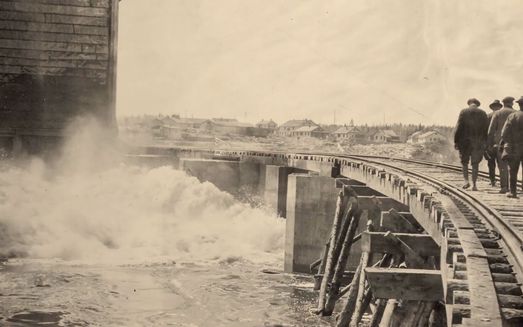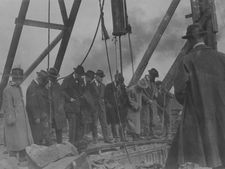Manitoba Hydro has plenty of longstanding examples of Energy for Life – one of the most enduring is Great Falls hydroelectric generating station, which is celebrating a century of serving Manitobans this year. Join us as we take a look back through video, photos and this in-depth retrospective.
Great Falls, our second-oldest hydroelectric generating station after Pointe Du Bois, turns 100 years old this year.
The station, on the Winnipeg River about 25 kilometres north of Lac du Bonnet, was developed by the Winnipeg Electric Railway Company (WERCo.), an early forerunner of Manitoba Hydro. WERCo. operated the city’s electric streetcar system.
100th anniversary - Great Falls generating station
In 1923, The Winnipeg Electric Railway Company (WERCo.) opened Great Falls generating station on the Winnipeg River.
One hundred years later it’s almost a forgotten fact that the initial spark for developing renewable hydropower in Manitoba wasn’t for lighting or heating, but for public transportation.
The first of the six generators at Great Falls went into service on January 3, 1923, and the second unit on April 4, 1923.
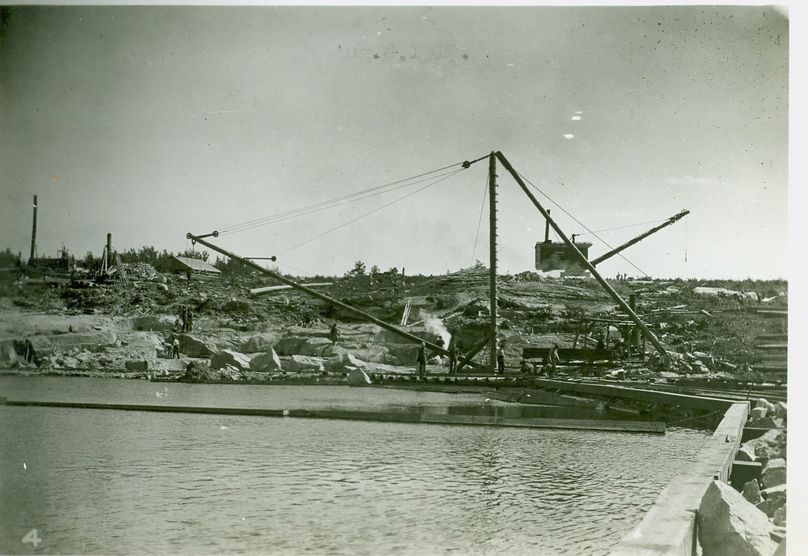
Early construction work at the Great Falls project.
Enlarge image: Black and white photo of Great Falls construction site.
Construction began on Great Falls in 1914 but halted because of World War I. Construction restarted after the war in 1919, but financial constraints halted the project again until November 1921 when WERCo. was on more solid footing – its profits had soared with more Winnipeggers riding streetcars following the war.
Build it and they will come
Sure, it’s a cliché, but in the early 1920s that could have been WERCo.’s motto.
And it was pretty simple: WERCo. would extend its streetcar lines to the city’s fledgling suburbs as long as those communities agreed to long-term deals to buy electricity from WERCo. for their homes and businesses, and for their communities to prosper and grow.

Milestone: the first unit is assembled at Great Falls (Dec. 28, 1922).
Enlarge image: Black and white photo of assembled first unit.
WERCo’s shareholders smiled all the way to the bank. By the early 1920s, WERCo. had the monopoly on public transportation in a booming city. It had also ventured into heating and cooking gas manufacture and distribution. And was the only game in town for far flung communities like Stonewall who wanted to electrify. City Hydro was WERCo’s only competition, but its playing field was within the City of Winnipeg.
So WERCo. focused on everywhere else like St. Boniface, St. James, West Kildonan and Charleswood.
And it could go even further with Great Falls, its second hydro plant on the Winnipeg River. WERCo. had built the Pinawa Generating Station in 1906, the first hydroelectric plant on the Winnipeg River. By the 1920s, Pinawa was maxed out (Pinawa shut down in 1951 to allow the new Seven Sisters Generating Station to use the water more effectively).
By 1922, WERCo. saw cheap hydropower as the quickest way to bring more prosperity to a growing city and fatten its shareholder dividends. WERCo. couldn’t build Great Falls fast enough.
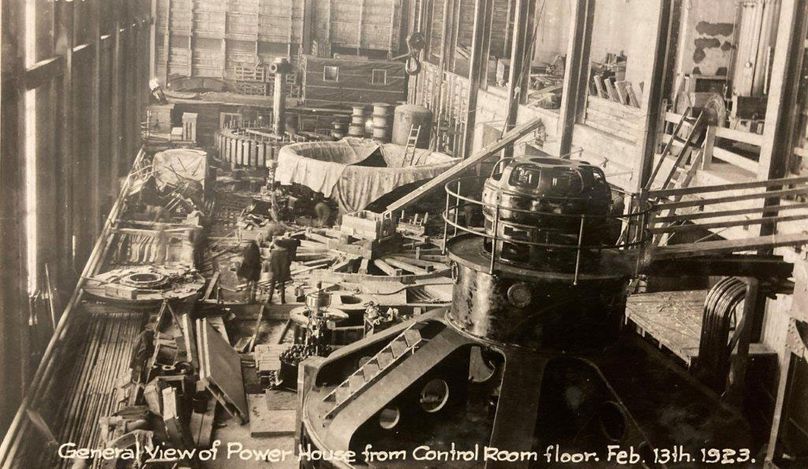
Enlarge image: General view of power house from control room floor. Feb 13th, 1923.
First power fast
Under its subsidiary the Winnipeg River Power Company Ltd., WERCo. told its contractors they needed first power from Great Falls by the winter of 1922-23. The rallying cry to get the first until in service was “Running by Christmas,” and a large sign hung in the powerhouse to encourage the 2,000 workers.
It worked. Great Falls was built in record speed, a huge feat given the only access for construction materials and supplies to maintain the workforce was by rail.
By the time the first two units started producing electricity, WERCo. had extended its streetcar lines to Selkirk, Stonewall, Headingly, and St. Norbert, and had secured exclusive deals to supply electricity and street lighting to these communities. WERCo. forecasted the output of the first two units at Great Falls would be consumed with the first year of operation.
WERCo. also shortened its name to the Winnipeg Electric Company in April 1924 to reflect it was now in the business of generating and distributing electricity – even to rural areas.
The third unit at Great Falls went into service November 29, 1926, to supply power to the newly built paper mill in Pine Falls, and the final units were added by November 4, 1928, as demand for electricity continued to grow.
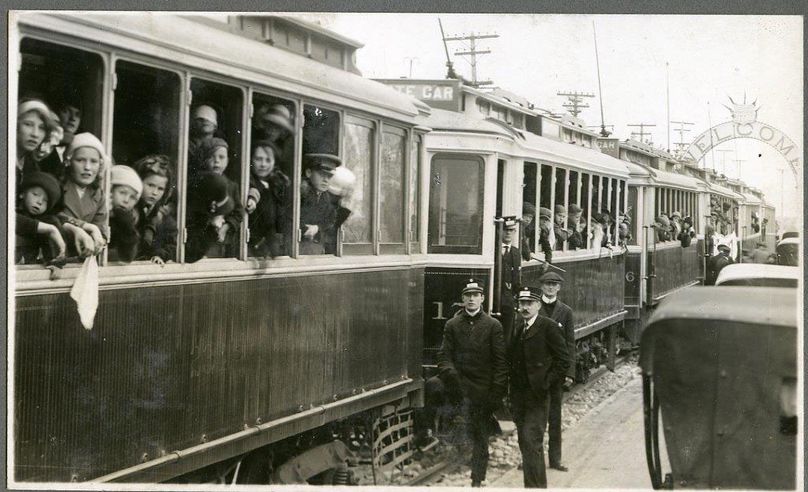
Streetcars arrive in St. Vital in the early 1920s.
Enlarge image: Black and white photo of people in streetcars.
McLimont magic
If there’s one person who was responsible for the rapid development of Great Falls, and the turn-around success of the Winnipeg Electric Company following World War I, it was Andrew Wyndgate McLimont, who joined the company in 1917 as general manager and succeeded Sir Augustus Nanton as president.
The scope of growth under McLimont did not escape Winnipeg Electric Company shareholders.
Speaking at a swanky dinner Oct. 1, 1927 at the Royal Alexandra Hotel, to mark the tenth anniversary of McLimont joining the company, Winnipeg Electric Company director J.B. Coyne said: “In 1917, the year Mr. McLimont came here, the output of electricity was 141,229,800 kilowatt hours. In other words, the Company and its associated enterprise, the Manitoba Power Company Ltd., will sell as much electricity this year in three months as was sold throughout the whole of the year 1917.”
McLimont also spoke at the dinner – oyster cocktails, green turtle au sherry and “tenderloin of beef” were on the menu – said the power from Great Falls would soon be used up and that an even larger plant on the Winnipeg River would be needed.
“No misguided opposition to active and progressive policies can deter us in our determination to assist in the growth and development of this country,” McLimont thundered. “Sound constructive analysis of our policies will always be welcomed but carping critics and progress blockers must be ignored.”
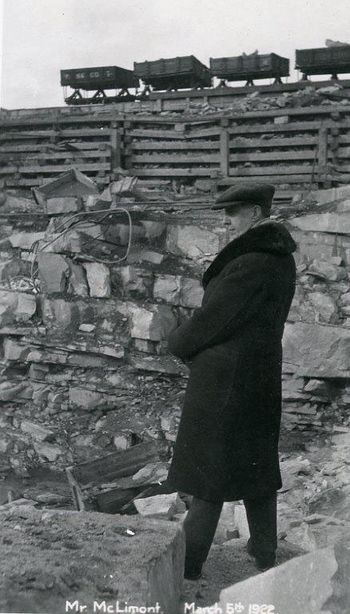
Andrew McLimont surveys the Great Falls site.
Enlarge image: Black and white photo of Andrew McLimont at the Great Falls site.
McLimont left the company in 1928. He died in Florida in July 1951 at age 81.
Great Falls, extensively updated in the 1940s and early 1980s, is the second largest plant on the Winnipeg River after Seven Sisters, developed by the Winnipeg Electric Company – just as McLimont had said - in two stages between 1929 and 1952. Great Falls has an output capacity of 129 megawatts and annual generation of 750 million kilowatt-hours.
Today, Great Falls is the base for Manitoba Hydro’s Winnipeg River operations.
Watch our Facebook and Twitter pages for more information about the 100th anniversary of Great Falls. We’re planning a public open house at Great Falls this summer.
And the Winnipeg Electric Company? It prospered until 1952 when its generating stations and distribution assets were purchased by the Manitoba Hydro-Electric Board, created by the province in 1949 to coordinate the development and operation of all electrical generating facilities in Manitoba. With Manitoba’s economy in an upswing after World War II and rural electrification going full steam, Manitoba’s energy demands needed to be managed by one public authority for the benefit of all. The Manitoba Hydro-Electric Board and Winnipeg Electric Company officially amalgamated in 1953.
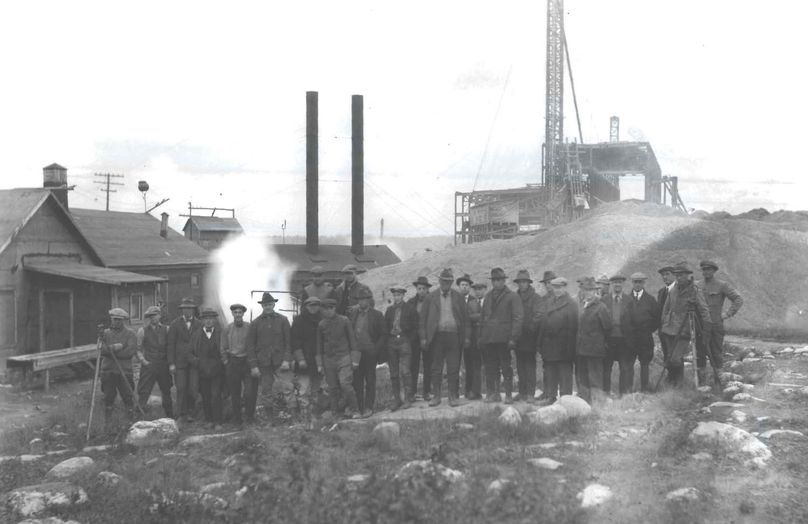
A crew at the Great Falls site.
Enlarge image: Black and white photo of a crew at the Great Falls site.
In 1961, the Manitoba Hydro we know today was created when the Manitoba Hydro-Electric Board merged with the Manitoba Power Commission, which was responsible for rural electrification.
The last streetcar ran in Winnipeg in September 1955 after 73 years of operation.
For more photos of the construction of Great Falls, click the gallery link below.

